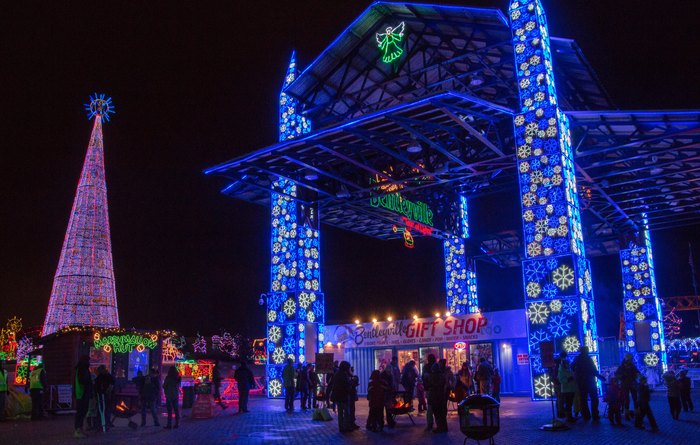
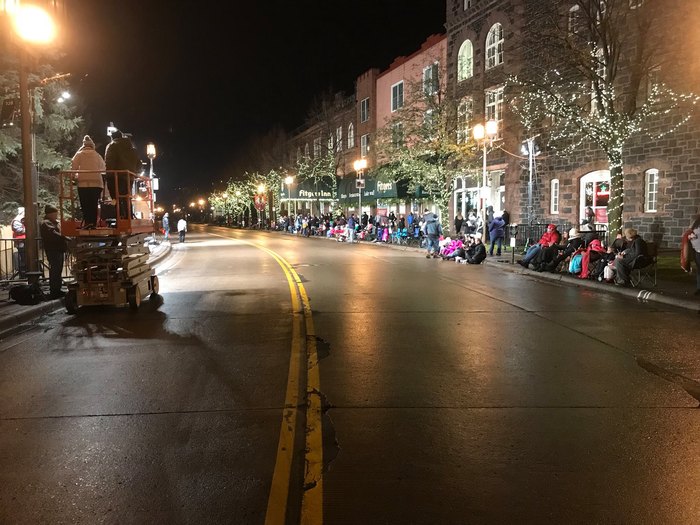


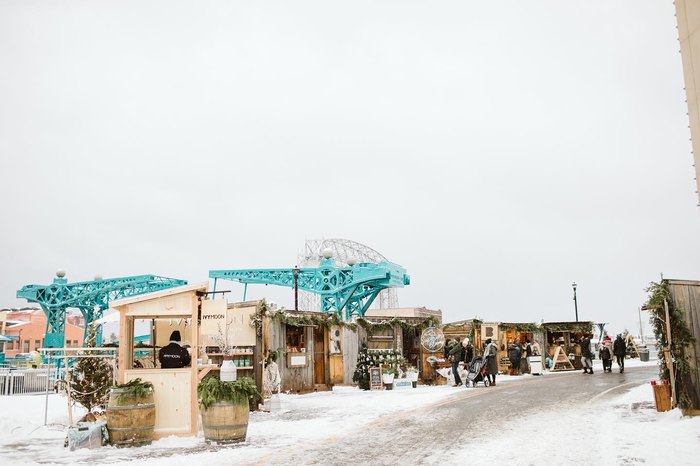
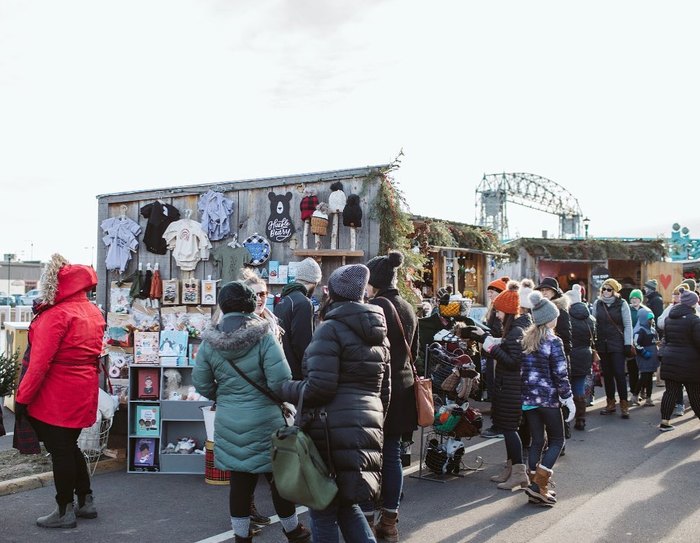
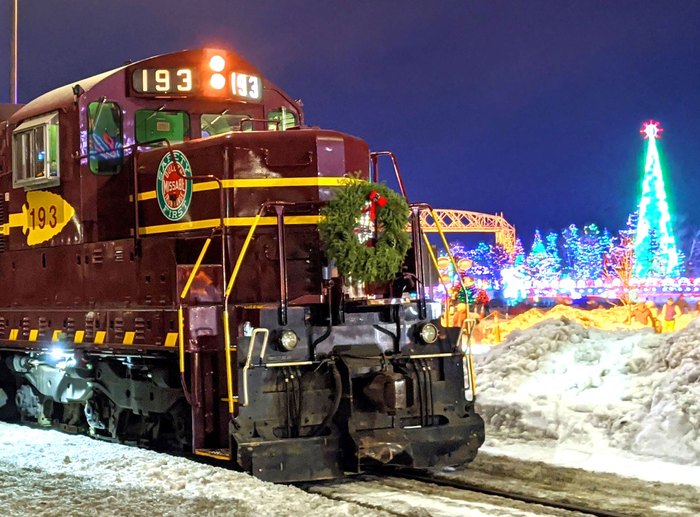
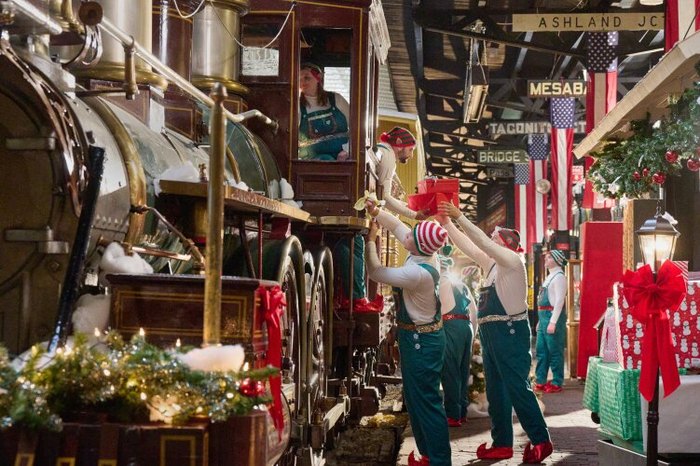

…
…
It’s a complete rundown of Stevie Wonder’s Hotter than July album! Hear the songs like “All I Do,” “Master Blaster,” “Lately” and “Happy Birthday” presented in order. Plus other Stevie classics such as “For Once in my Life,” “Higher Ground,” “Livin’ for the City,” “As” and more! Performed in the month of January as a 41st anniversary celebration of the national recognition of Martin Luther King Jr. Day.
The featured artists are members of the long-standing and historic Soul Tight Committee band backed by Kathleen Johnson of Greats Gone 2 Soon live music series, Musicians4Musicians. Many have been featured in past CDT concerts like The Spirit of Whitney, The Music of Al Green & Bill Withers, Aretha and Her Men, Vintage Cruise and more! You don’t want to miss this!
…

…
Sunday, January 14th, 7:00pm
Dinner & Show: $64
Show-Only: $44
Dinner upgrade available for $20/person and is served 2 hours prior to showtime.
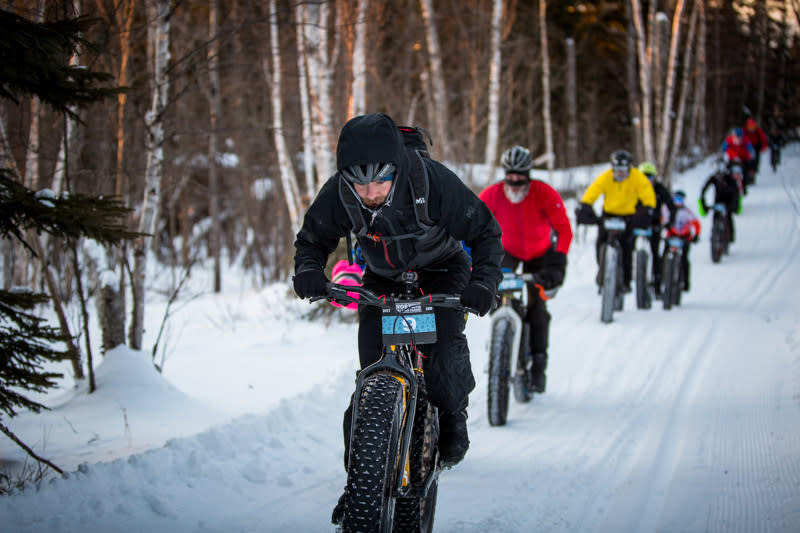
Norpine Trail Fat Bike Classic
…
Join us for the Norpine Fat Bike Classic and ride the beautiful woods along the North Shore of Lake Superior! Ride groomed trails through snow-blanketed forests filled with old growth cedars and beneath a vibrant sky full of sparkling stars.
This year we will have 3 events to choose from – The Long Pine Race (25 miles), the Short Pine Race (14 miles), and the Dark Sky Tour (about 4 miles). We will also be hosting a free group ride at Pincushion Mountain singletrack trails.
Choose between the Long Pine Race (25 miles) or the Short Pine Race (14 miles). The registration fee is $90, which includes a t-shirt, after race BBQ, a SWAG bag loaded with good stuff, entry in after race raffle drawing for awesome prizes, with all proceeds from the race going to support trail maintenance for the Superior Cycling Association and Norpine Trail Association. Both of these race events will be on Saturday, January 6th starting and finishing at Cascade Lodge with the course on the beautiful and challenging Piston Bully groomed, Norpine Trails. The event is limited to 125 riders.
Awards will be presented following the race at Cascade Restaurant where all riders will enjoy a delicious BBQ lunch. This event is also a fundraiser for the Superior Cycling Association and Norpine Trail Association to support these great trails we have in Cook County. Come out and enjoy a day on the Norpine trails.
…
The Dark Sky Tour will be held on Friday, January 5 at 5:30pm. The registration fee is $25 and it will be about a 4 mile ride. Enjoy an evening group ride by the light of the moon illuminating the trail (but bring a headlamp or light just in case) starting and finishing at North Shore Winery where we will be sampling their wines, holding race registration and number pickup, fat bike demos, and a new fun event for all, the CRAZY criterium, on a ¼ mile trail outside the door of the winery.

…
A day of fun at the North Shore Winery with race registration, number pickup, fat bike demos, CRAZY Pine Criterium, a Dark Sky Tour, music, and mulled wine for an afternoon and evening of fun.
2:00-8:00pm: Registration and number pickup for Saturday’s Long and Short Pine Races.
2:00-5:00pm: Fat Bike Demos by Spoken Gear Bike Shop
3:00-4:30pm: CRAZY Pine Criterium, ¼ mile course, all for fun
5:30-6:30pm: Dark Sky Tour
…
Cascade Lodge and Restaurant – Where all the race day action is located.
8:00-9:30am: Registration and race number pickup at the Lodge
10:00am: Long and Short Pine races begin
11:15am: Estimated time for first finishers
Noon: BBQ begins in Cascade Restaurant
2:30pm: Awards Ceremony
…
Meet at 10:00am at Pincushion Mountain Trailhead for a free group ride on the groomed singletrack trails.
Parking will be available at Cascade Lodge.

Coppersmith Photography
The Cozy Cottage baked by Emily Antolick
…
Norway House’s Gingerbread Wonderland: Gingerbread (or, in Norwegian, pepperkake) is a quintessential feature of the Norwegian holiday season. Towns all over the country come together to build their own miniature cookie cities, bringing families, schools, businesses, nursing homes, and friends all together during the holiday season.
We wanted Minnesota to get in on the fun, too! In 2015, we kicked off our first Gingerbread Wonderland. Since then, it’s grown above 250 structures! You will find tons of familiar buildings and landmarks created by our community, including structures by professional bakers and gingerbread enthusiasts of all ages and abilities.
Our community-curated cookie showcases the creativity of bakers, young and old, from newbies to pros! You, too, can bake a house to add to the display!
For those who are dedicated gingerbread aficionados, prizes are awarded for Best in Show and Best Kids’ Structure, decided by visitors to the exhibit. Each year, we also have a team of adjudicators come in to pick their favorites to be featured in the news and in our marketing throughout the holiday season!
…

…
This exhibit is on display each day of the week except Mondays.
…
…
913 East Franklin Avenue
Minneapolis, MN
…

…

Bentleyville USA has become a holiday tradition at Bayfront Festival Park along Duluth’s harborfront.
…
…









Renée Jones Schneider, Star Tribune
…
It’s nature’s version of a ball pit. Or a chic Instagram backdrop.
But for Shannon Forster and her family, cranberry harvest is a job that doubles as a CrossFit-grade workout.
Forster and her uncle, wearing waders in knee-deep water, pull on each end of a long, floating boom that encircles a load of cranberries. Though each berry weighs hardly anything, dragging thousands of them across the bog requires plenty of strength.
And agility. Because on a chilly October morning, you don’t want to lose your footing.
“Everybody probably gets dunked once a year,” Shannon admitted.
The tart berries are a staple of the Thanksgiving table, yet tend to spend the rest of the year pushed to the back of the freezer or pantry — the fruit world’s crimson-hued stepchild.
But cranberries have deep cultural, economic and historic significance in the United States. Their high levels of health-promoting antioxidants have made them a valuable food and medicine for Indigenous people for centuries. The U.S. has long been the world’s largest grower of cranberries, which are among the few commercially important fruits native to North America.
Wisconsin produces more than half of the country’s crop. And though northern Minnesota’s peatlands have similar, cranberry-conducive conditions — sandy, acidic soil, abundant fresh water, a climate that’s both hot and cold — the Forsters are the state’s only commercial growers.
As they transition operations to the second generation, the Forsters continue to refine their growing and harvesting techniques so they can produce their niche crop as sustainably as possible. “We take a lot of pride in what we do,” Shannon said.
Renée Jones Schneider, Star Tribune
…
For more than two decades, Shannon’s parents, Randy and Billie Jo, have ridden the ups and downs of cultivating a specialty crop that’s temperature-sensitive and can be easily damaged by heavy equipment.
The Forsters bought their farm after a large East Coast cranberry grower had developed the bogs for growing the fruit, just as its price crashed. Now they’re training the next generation.
With both mom and dad working off the farm as truck drivers, 21-year-old Shannon has taken the reins as manager and her brother, Nathan, 15, is the primary farmhand, homeschooling so he can prioritize the family business.
“I always joke with him: You can’t be too smart, because you can’t take my job,” Shannon said. “You’re still my little brother, and I’m still your boss.”
Shannon, the youngest of the family’s three daughters, took advantage of postsecondary enrollment options during high school and earned an associate degree, knowing she wanted to focus on farming. During the growing season, she takes responsibility of the farm’s daily operations. And it’s all-hands-on-deck during harvest season.
Walking across one of the family’s soon-to-be-flooded fields, covered with a low, dense network of cranberry vines, Shannon said that the biggest misconception about cranberries is that they grow in water. The Forsters flood their 50 acres of berries several times a year, but only for a period of days.
Most of the time, the fields look dry as those underfoot, which contains hundreds of berries per square foot. The visible cranberries are bright red, while those beneath are pink or white. They’re all ready for harvest, Shannon explained, it’s just that the lighter colored ones don’t get as much sun exposure and tend to stay warmer. “To turn red, cranberries need sunlight and cold temperatures,” she said.
Similar to wild rice (which the Forsters also grow, along with soybeans, oats and wheat), commercially cultivated cranberries are grown in a series of small plots surrounded by dikes and canals to hold and transfer water.
The Forsters pump water between a reservoir and the cranberry and rice fields throughout the year, recycling as much of it as they can. “Both crops need water at different times, so there’s a ton of value in farming them together,” Shannon said. “But we’ve never heard of another farm that grows both cranberries and wild rice.”
In the spring, the fields are flooded for natural weed and pest control. During the growing season, the vines are irrigated to protect them from freezing or scorching temps. For weeks when the weather puts the cranberries at risk, the family works overnight shifts to ensure the irrigation system is operating properly. (The job involves traipsing around the fields in the dark to check the water lines for leaks, monitor temperatures and pick test berries to assess their condition.)
In the fall, the wet harvest technique used by the Forsters takes advantage of the air pockets inside cranberries; after the fields are flooded and vines agitated by machine, the berries float to the water’s surface. The berries are gathered, frozen and processed for juice, dried cranberries and sauce.
Cranberries sold fresh, which represent a small fraction of the country’s annual crop, are dry-harvested with the aid of small mechanical pickers. Then, during the winter, the fields are flooded once more to create a layer of ice that protects the perennial vines from severe cold.
While Shannon is concerned about more erratic weather — a few years ago, a surprise mid-June frost devastated the family’s crop — Midwest-grown cranberries haven’t experienced the degree of climate change as those in Massachusetts, which pioneered the industry and led production until the 1990s.
In recent years, East Coast growers have seen their crops suffer from higher summer temperatures, warmer winters and droughts. But because of the expensive infrastructure required for cranberry farming, there are few new growers joining the ranks.
…
Randy Forster has continuously refined the family’s farming practices over the years, which includes tinkering with specialized equipment, such as the cranberry harvester. It’s essentially a giant wet vac that sucks the cranberries up to a platform where a water bath separates the good, floating berries from any imperfect ones and plant material. The berries look like a red river, speckled with pink and white, as they ride the waterfall between the platform and the semitrailer parked below.
The Forsters share a small portion of their crop with local beverage makers, including Lakes and Legends Brewing Co. in Minneapolis, Buffalo Rock Winery in Buffalo, and Fargo-based Flannel Fizz soda. But they send most of their harvest to a receiving station in Tomah, Wis., run by Ocean Spray, the agricultural cooperative that counts the Forsters among its 700 farmer members.
The Forsters’ semitrailer slowly fills up with berries — by the hundreds, thousands, millions. When the little crimson orbs reach Tomah, and mix with berries from other farms, they’ll look indistinguishable from those grown elsewhere. But for now, they’re Minnesota’s finest.
Renée Jones Schneider, Star Tribune
…
By
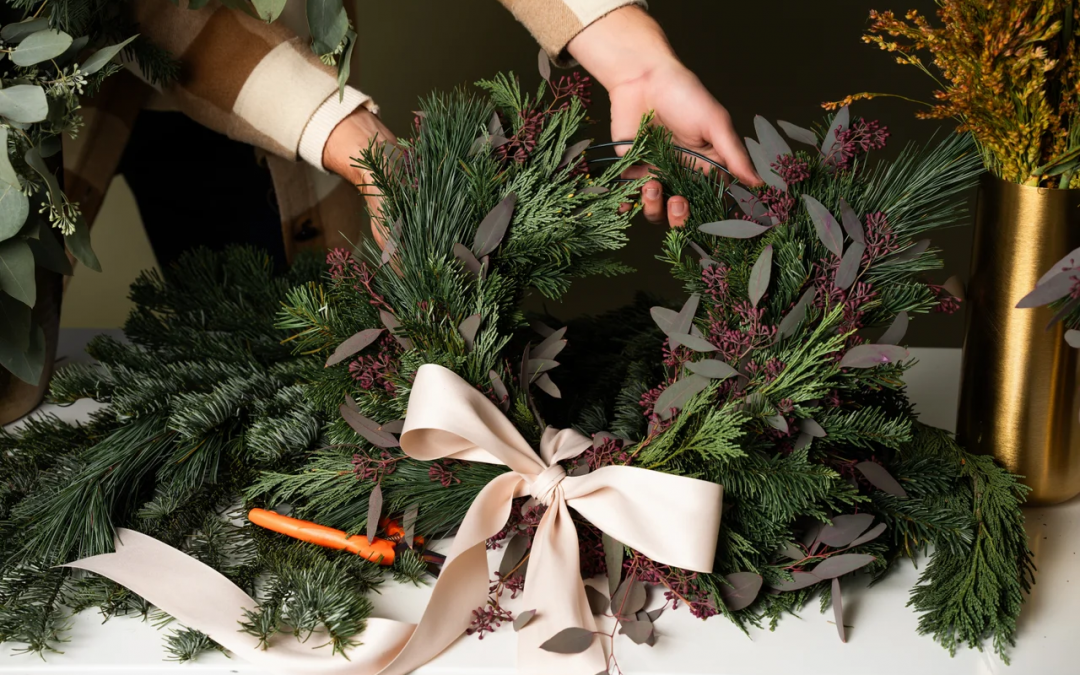
Winter Wreath and Porch Pot Making
…
Discover the art of designing stunning, seasonal wreaths and pots that will adorn your home with warmth and beauty. Our workshops are a gateway to creating the perfect decorative piece for every season.
…
– Expert Instruction: Our experienced floral instructors will guide you through the process, sharing tips and techniques for creating beautiful wreaths.
– Seasonal Selection: Work with an array of seasonal greens, florals, and decorative elements that capture the essence of the time of year.
– Hands-On Creativity: Dive into the world of wreath design as you craft your very own personalized masterpiece.
– Personal Touch: Tailor your wreath or porch pot to your unique style and the specific season you’re celebrating.
– Heartwarming Atmosphere: Enjoy the camaraderie of fellow floral enthusiasts in a cozy and inviting setting.
Whether you’re looking to adorn your front door with a welcoming wreath, create a beautiful porch arrangement, or give the gift of handmade decor, our Workshop is the perfect choice.
…

…
Wreath Making Design Kit ($85) Level: Easy – Includes farm fresh flowers, our creative guide to DIY design, oasis floral foam, and a small reusable vase.
Porch Pot Design Kit ($135) Level: Intermediate – Includes twice as many farm fresh flowers, design guidance from our Master Florist, oasis floral foam, and a large ceramic vase.
*UPGRADE: VIP packages allow guests to arrive 20 minutes early for best pick of the flower bar, one-on-one attention from our Floral Design Master, and a complimentary drink on us.
Join us for an enjoyable and creative experience that combines natural beauty, seasonal charm, and the joy of crafting something truly special. Reserve your spot today and let your creativity flourish!
…
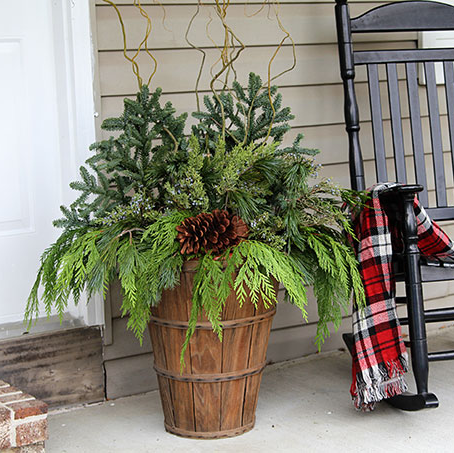
…
Winter Wreath and Porch Pot Making at Hewing Hotel
$85.00 – $135.00
…
Bentleyville City of Lights Festival, Holiday Helicopter Tours – Duluth, MN